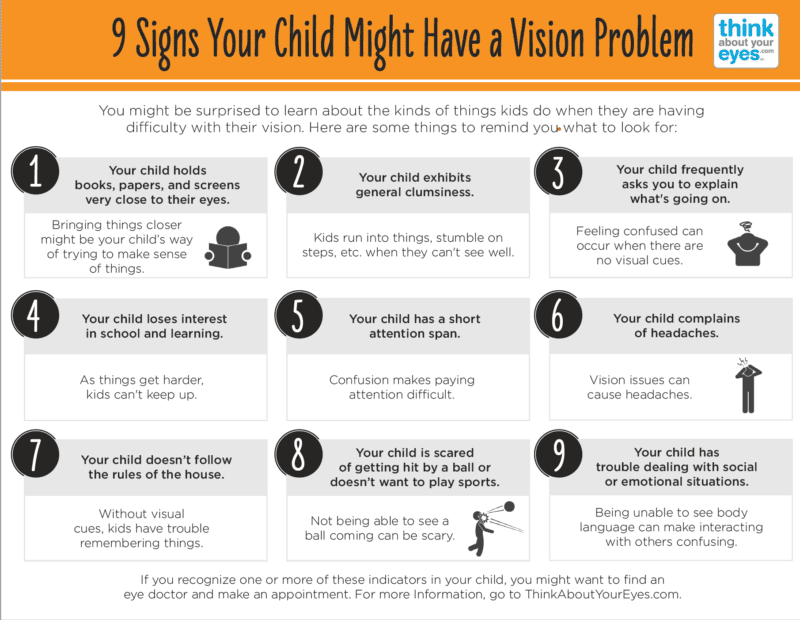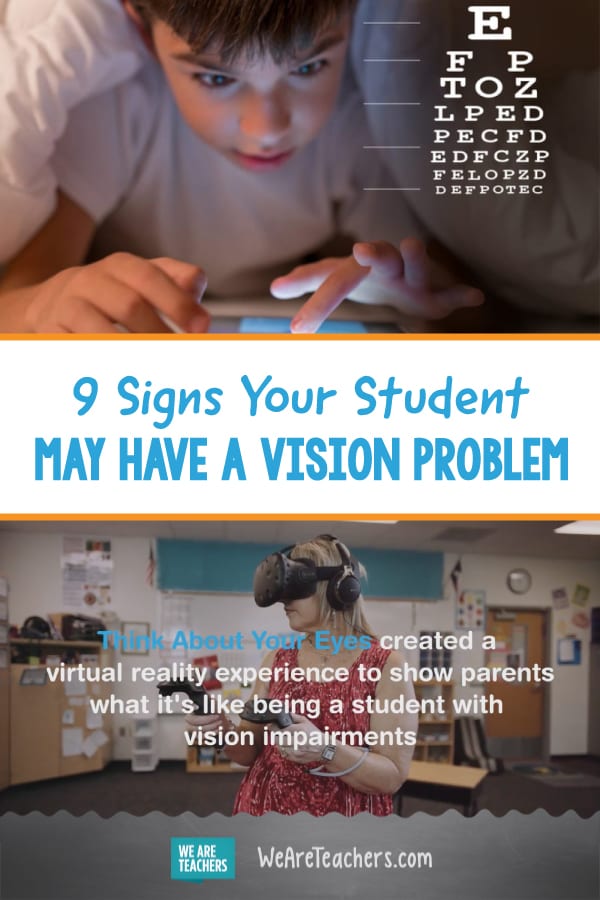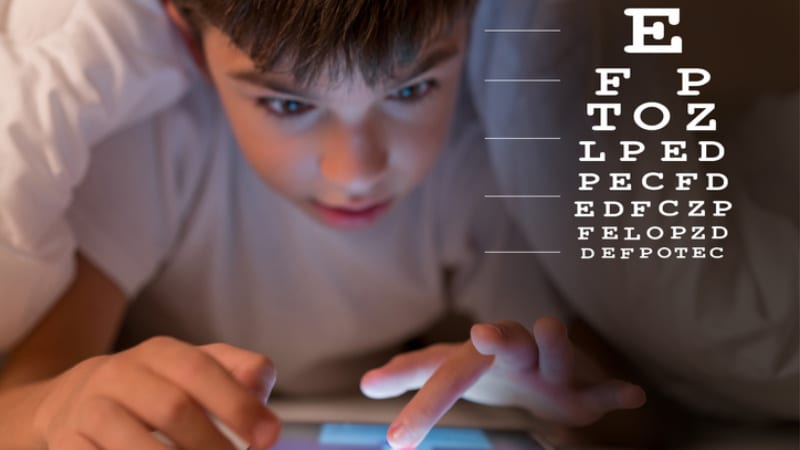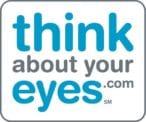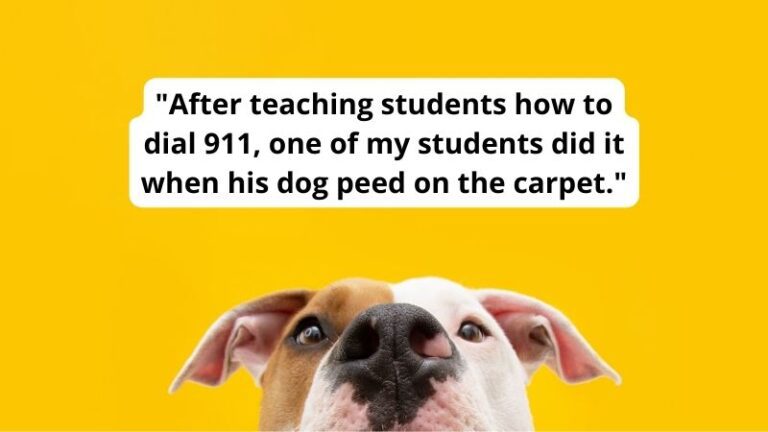When a kid can’t see well, very little about school makes sense.
“She seems smart, but she doesn’t apply herself, and she talks too much.” My report cards always irritated my mother, who knew the late nights I had put into rewriting notes to make sense of my school day. So, at 16, armed with my first pair of glasses, she hugged me as I cried. I hadn’t known what I’d been missing—people’s facial expressions, brilliant colors, and signs in the hallways suddenly came into focus. Here’s how vision loss in kids can be misunderstood as cognitive, behavior, or physical disorders:
1. Kids ask other students what’s happening when they can’t see the teacher’s visual cues.
There are all kinds of visual cues—facial expressions, hand movements, etc.—given throughout a student’s day. The child with poor eyesight is likely missing most of them. As a result, the classroom becomes a confusing place to be. So kids adapt and do things like talk to their neighbors or act out to distract from their confusion. Kids with vision problems also sometimes become hesitant to ask questions or participate.
2. Kids are clumsier than usual when they can’t see well.
We all know the kids who knock over or run into stuff all the time. You’ve just set up the document camera right in the middle of the room and, bang!, over it goes. It’s irritating (not to mention dangerous), but it also may be a sign of poor vision. When kids don’t see well, they exhibit general clumsiness, such as stumbling on steps, missing a table when they go to put something down, and more. Take note of the one or two kids who do this pretty regularly and let their parents know it might be a good idea to take them to visit an eye doctor. Consider sending home this awesome parent guide about vision care for kids.
3. Kids don’t respond appropriately to directions or rules when they can’t see well.
Sure there are kids who “fight the system” and those who have spectrum diagnoses, but did you know that lots of kids with vision problems appear to have behavior disorders? They say things like, “But I didn’t know I was supposed to do that!” and, “That’s not fair!” Teachers have so many kids in a classroom that it can be tough to figure out each misunderstanding, but when it keeps happening to the same child, it’s worth telling their parents to get their eyesight checked.
4. Kids with vision loss lose academic growth every year.
The longer poor vision goes undetected, the worse behaviors and cognitive issues will get. With every grade level comes increased expectations and visual challenges. The size of the print decreases, and the time students spend reading and studying increases. When kids can’t keep up with these challenges, their differences grow exponentially. By the time I was 16, I’d missed out on a significant portion of the academic world just because I couldn’t see what was happening. Some of the more concrete things you might see in kids who have poor vision include using a pencil to mark their place while reading a book or coming up close to anchor charts after the lesson to see what they say.
5. Kids who can’t see often don’t pay attention throughout the day.
When kids’ vision is not functioning properly, not paying attention in class is a regular occurrence. Interestingly, studies show that students with IEPs tend to have more vision problems than the general population. In one study, 21 percent of children with IEPs had vision problems. That’s not to say that putting glasses on a child will cure any school issues they may have, but addressing vision loss in kids can significantly improve their school experience. It’s tough to pay attention when very little makes sense during a lesson. I remember being amazed that kids could take notes during a lesson because I could never read the words on the board.
6. Kids who don’t see well ask to visit the nurse, often with complaints of headaches.
As a first grade teacher, I’ve regularly blamed headaches on lack of sleep or water, and I was probably right for the most part. But, when you get a kid frequently asking to see the nurse and resting their aching head on a table or the floor throughout the day, it makes sense to talk to parents or the nurse about getting the child’s vision checked. Imagine how much more a kid can do at school when the pain is gone!
7. Holding books, papers, and screens very close to the eyes might be a sign of vision loss in kids, not a sign of being absorbed in reading.
Sometimes kids are just trying out new ways of seeing the world or getting closer to the action. Often they think they might be better readers if they bring the words in close. But, in the case of kids who can’t see well, they are trying to see what they know everyone else already sees. The world gives more information to the person who can see well. Bringing things closer is a kid’s way of trying to make sense of the world.
8. Kids who can’t see the ball coming or find their friends stand alone during recess.
Getting hit with a ball is scary, and when you can’t see the ball coming, that fear is very real. Kids who have poor eyesight not only risk getting hit, they also have trouble discerning different people or things on a playground. This leads to kids who choose to stand alone rather than look around for friends or play a game poorly. Some kids with vision loss will play games despite not being able to see well, these kids should be visiting an eye doctor for protective eyewear. Making a recommendation to all parents to take their child to see an eye doctor who also specializes in treating kids who play sports may help every child get the comprehensive vision screening they need.
9. Vision loss in kids can make social-emotional learning difficult.
Not being able to see well can result in not being able to navigate the social and emotional playing field. These kids can’t use the regular visual cues, like facial expressions and body language, to learn social skills and emotional regulation. Not seeing well combined with no support structures make school (and the outside world) hard to understand. Life is hard enough, am I right? Let’s give kids a fighting chance to see the change they want to make.
Teachers can help their students and their families rule out so many challenges when they understand the importance of vision health. That’s why we developed this printable handout for you to use as well as send home with your students. It lets everyone know what to look for when it comes to child vision issues, when to visit an eye doctor, and how to find an eye doctor .
This free download was developed by WeAreTeachers and ThinkAboutYourEyes.com because no child should miss out on what’s happening around them.
